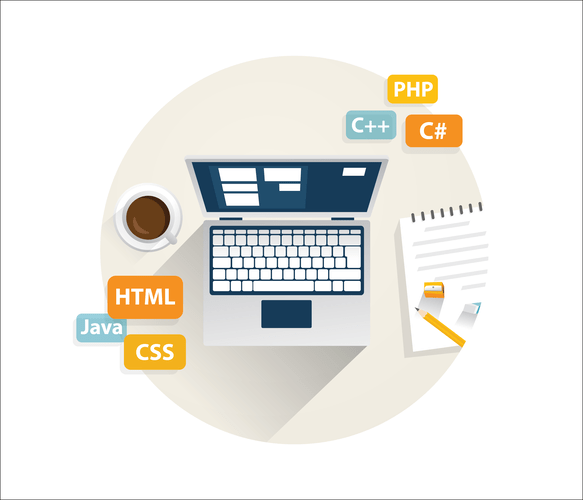For example, a vehicle is an object which can act in the real world. However, the procedural language would just be concerned about the procedure (i.e. doing things), so it would just focus on the movement and not care about how the vehicle looks. You can easily distinguish between the real-world interpretation of a vehicle and procedural programming’s interpretation of the same vehicle. C supports calloc() and malloc() functions for the memory allocation, and free() function for the memory de-allocation.
C is still a popular language, especially with embedded systems and places where object-oriented programming isn’t needed. Try our Learn C course if you’re interested in learning the basics of the language. C++ is used where performance is at a premium and low-level control over the system’s resources is needed. It’s commonly used to develop operating systems, video games, database software, web browsers, and embedded systems. While C++ is an extension of C, the applications of C and C++ differ greatly. C is used to develop operating and embedded systems, Android technology, and popular databases.
C# 7.0
Skilled programmers can use either to create a fully functioning program. That said, bottom-up is usually better for teams and top-down for individuals. https://globalcloudteam.com/tech/c/ Bottom-up tends to be messier than the organized by default top-down. C++, on the other hand, is a bottom-up programming language with lots of features.
Oracle Developer Studio C and C++ compilers follow the Oracle Solaris ABI and are compatible. Third-party C compilers for Oracle Solaris usually also follow the ABI. Any C compiler that is compatible with the Oracle Developer Studio C compiler is also compatible with the Oracle Developer Studio C++ compiler. In addition, you’ll need to read the rest of this section to find out how to make your C functions callable by C++ and/or your C++ functions callable by C.
Recommended Programs
Then you use your microwave or coffee maker to make your breakfast. They are also embedded systems and therefore are probably programmed in C. When you open your garage door with the remote control you are also using an embedded system that is most likely programmed in C. Microsoft’s Windows kernel is developed mostly in C, with some parts in assembly language.
- Operator overloading allows you to change the way an operator works for user-defined functions.
- This approach is more difficult to organize but results in more modular code and a final product that’s easier to use and modify.
- It was used to develop desktop applications for the Windows operating system and server-side applications for Windows servers.
- Meanwhile, C++ uses a bottom-up approach that sees programmers using low-level design to achieve high-level results.
- C++ or C with Classes is a general-purpose object-oriented programming language that is used to create high-performing applications.
Any considerations about mixing IOstream and Standard I/O in the same program therefore do not depend on whether the program contains C code specifically. The issues are the same for purely C++ programs that use both Standard I/O and IOstreams. C++ code can still call the overloaded functions and the template functions.
What do I need to know when mixing C and C++ code?
Programming professionals will decide the best time to use c vs c++ when working through different elements of design.C is a procedural language with manual memory management. This allows developers to design the top-level elements and structures before moving on to the smaller inner workings. https://globalcloudteam.com/ This is an easy-to-comprehend structure and results in organized programs. The language's name was changed from C with Classes to C++ in 1983. The ++ operator in the C programming language is used to increment a variable, which reveals something about Stroustrup's attitude toward the language.

Oracle Developer Studio C and C++ compilers use compatible headers, and use the same C runtime library. As an OO programming language, C++ allows you to model the problem domain itself, which allows you to program in the language of the problem domain rather than in the language of the solution domain. (For basic info on passing C++ objects to/from C functions, read the previous FAQ).
Use of inheritance
Today, the C language is a general-purpose and low-level programming language that offers programmers fine-grained control over hardware and memory, making it popular for system-level programming. In a nutshell, the C++ language includes all of the features of C but with the addition of OOP. C++ is also backward-compatible with C, meaning C code can be compiled by a C++ compiler with few modifications. This makes C++ popular for systems programming, as C code can be reused while gaining object-oriented programming functionality. C is a structural programming language, so everything is broken into functions that get the work done. C++ is an object-oriented programming language which gives a clear structure to programs and allows code to be reused, lowering development costs.
Dactylides A−C, three new bioactive 22-membered macrolides ... - Nature.com
Dactylides A−C, three new bioactive 22-membered macrolides ....
Posted: Fri, 19 May 2023 10:43:30 GMT [source]
C++ gives programmers a lot of power over the system's memory and resources. C++ is one of the most widely used programming languages in the world. Today's operating systems, graphical user interfaces, and embedded systems all contain it.
Programming style
ParameterCC++Programming StyleThe C programming language is a procedural language type. The language is function-driven.C++ is an object-oriented programming language type. C is a basic version of a programming language and supports only primitive, fixed data types.Besides built-in data types, C++ also supports user-defined data types. It is easy.C++ is a more object-oriented high-level programming language which requires fixed construction and principles.

In the worst case, you get a system call per character input or output. If the program does a lot of I/O, the performance might be unacceptable. If you didn’t get your extern "C" right, you’ll sometimes get linker errors rather than compiler errors. This is due to the fact that C++ compilers usually “mangle” function names (e.g., to support function overloading) differently than C compilers. The extern "C" line tells the compiler that the external information sent to the linker should use C calling conventions and name mangling (e.g., preceded by a single underscore).
Constructs valid in C but not in C++
Destructors should not throw , but the user could throw anyway, or they could throw indirectly by calling some function or method that throws an exception. At the hardware/software boundary, computer systems and microcontrollers map their peripherals and I/O pins into memory addresses. System applications must read and write to those custom memory locations to communicate with the world. So C’s ability to manipulate arbitrary memory addresses is imperative for system programming. They are like small computers that have a microcontroller/microprocessor inside that is running a program, also called firmware, on embedded devices. That program must detect key presses and act accordingly, and also display information to the user.
